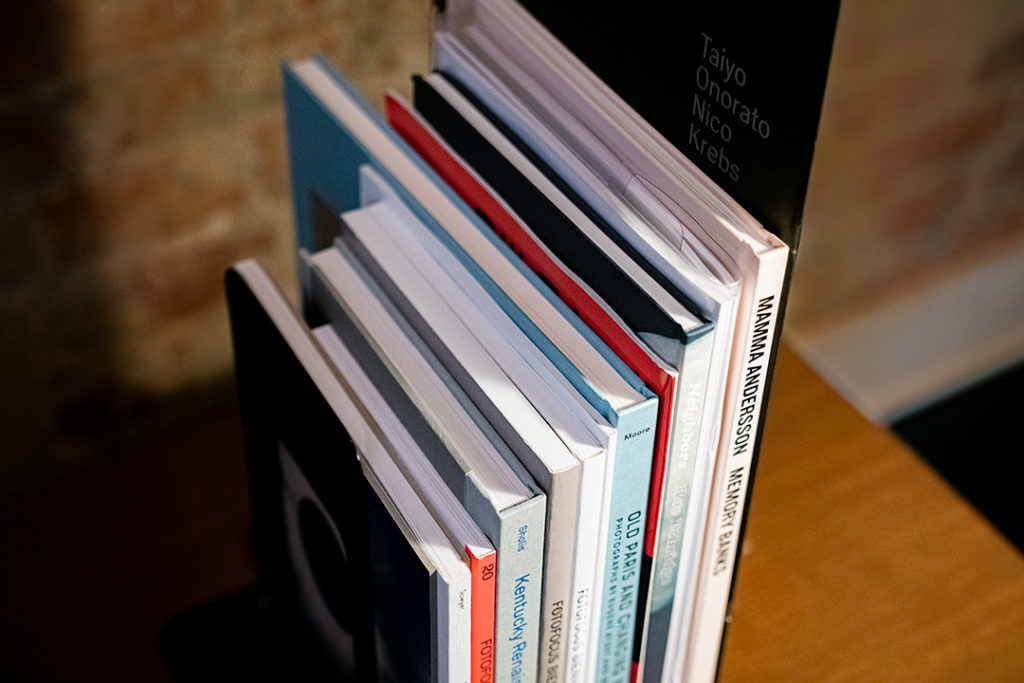New 2022 FotoFocus Biennial Publications
Posted on October 7, 2022
FotoFocus is committed to producing printed materials, through publishing initiatives and partnerships, including the FotoFocus Biennial Catalogues, artist books, exhibition catalogues, and monographs. Our website provides a full list of FotoFocus publications from over the years. Check out the 2022 FotoFocus Biennial Publications below:
Free as they want to be: Artists Committed to Memory
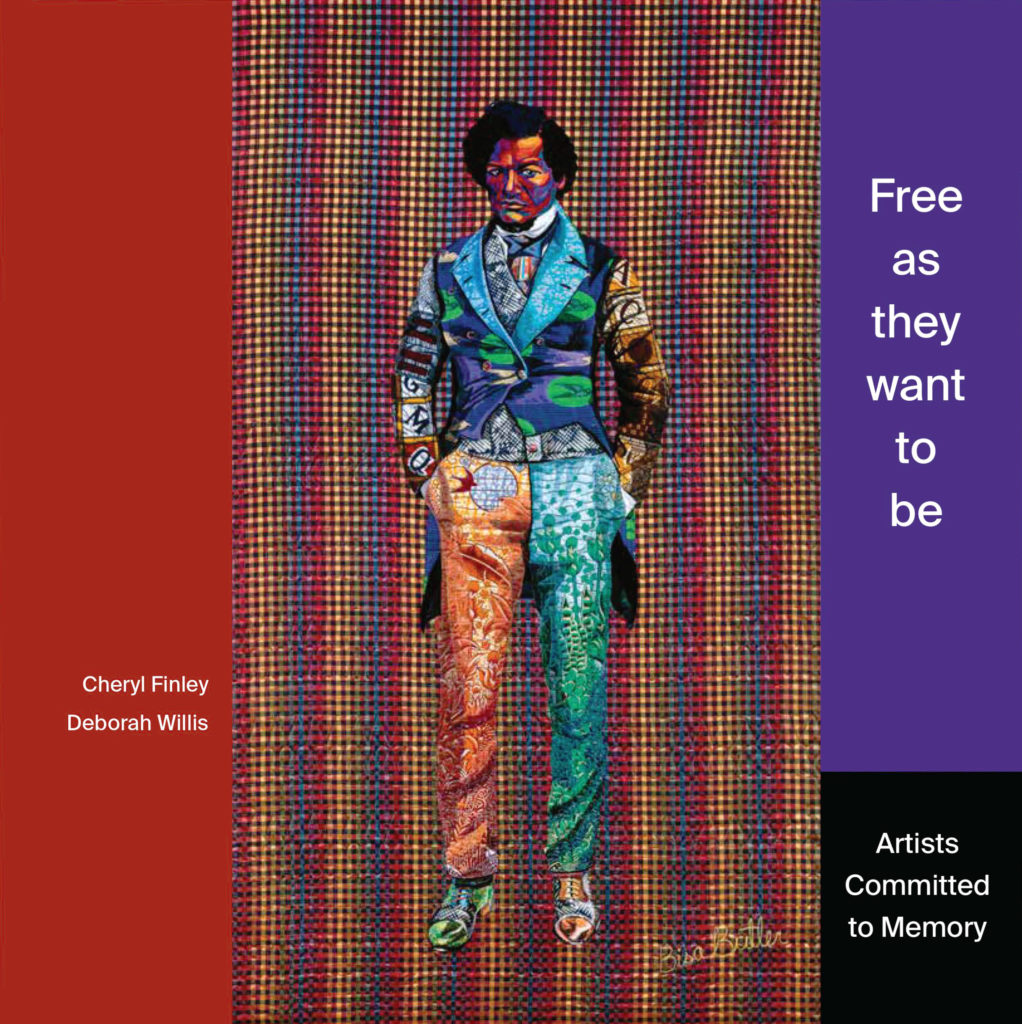
By Cheryl Finley, Deborah Willis
Published November 15, 2022 on the occasion of the 2022 FotoFocus Biennial exhibition, Free as they want to be: Artists Committed to Memory.
Hardcover, 144 pages. Damiani, Publisher
‘Free as they want to be: Artists Committed to Memory’ is the companion publication to the FotoFocus biennial exhibition that is scheduled for Fall 2022 and will run at the National Underground Railroad Freedom Center (September 30, 2022 – March 6, 2023).
This project considers the historic and contemporary role that photography and film have played in remembering legacies of slavery and its aftermath while examining the social lives of Black Americans within various places including the land, at home, in photographic albums, at historic sites, and in public memory. The publication presents some 20 artists working in photography, video, silkscreen, projection, and mixed media installation: Terry Adkins, Radcliffe Bailey, J. P. Ball & A. S. Thomas, Sadie Barnette, Dawoud Bey, Sheila Pree Bright, Bisa Butler, Omar Victor Diop, Nona Faustine, Adama Delphine Fawundu, Daesha Devón Harris, Isaac Julien, Catherine Opie, Yelaine Rodriguez, Hank Willis Thomas, Lava Thomas, Carrie Mae Weems, Wendel A. White, William Earle Williams. The works they have conceived reflect defining moments in the struggle for racial justice and equality and advance a different sense of empowerment. The timing of a publication like this could not be more urgent given the human toll of the pandemic, widening economic disparities, the threat of war, voting rights, global migration crises, and quotidian violence.
The book and the exhibition are edited and curated by Cheryl Finley and Deborah Willis.
On the Line: Documents of Risk and Faith
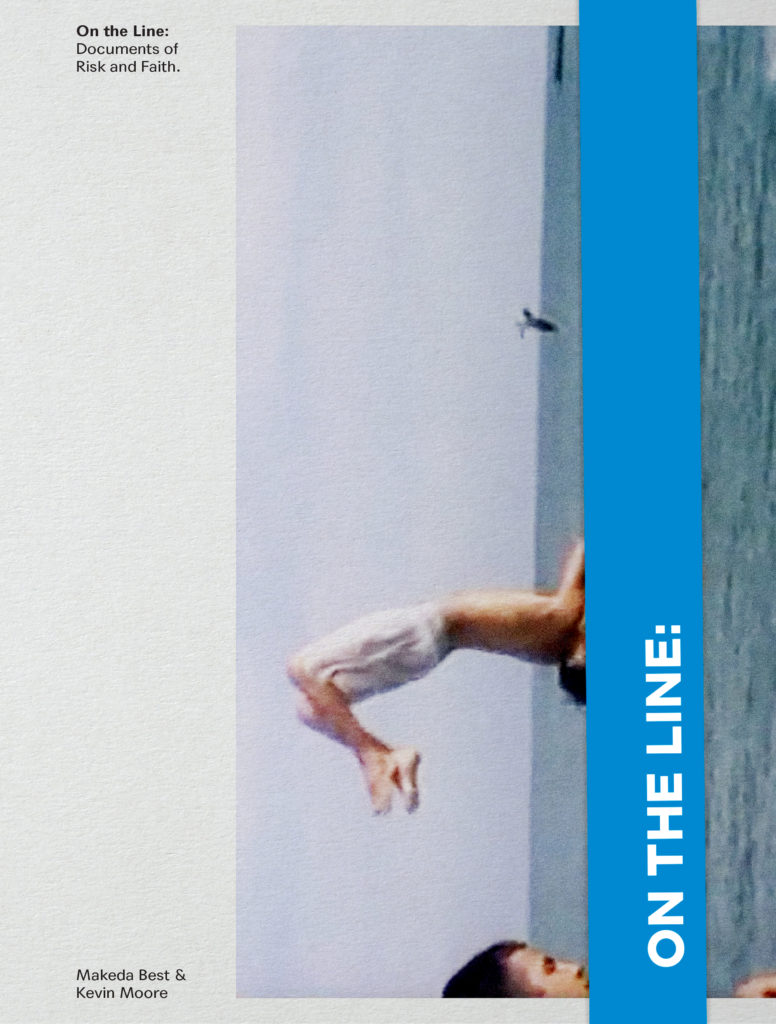
By Makeda Best, Kevin Moore
Published September 4, 2022 on the occasion of the 2022 FotoFocus Biennial exhibition, On the Line: Documents of Risk and Faith.
Paperback, 208 pages. Gnomic Book, Publisher
The works in On the Line address a range of topics, spanning performance and the body, climate change, power, colonialism and identity, heritage, and territory. They originate from a common geography of the Americas, the multi-continental, multi-national landmass (and its archipelagos) spanning northern Canada to Southern Brazil. Collectively, they portray the complex and contested relationships humans have with notions of resources, environment, wilderness, nature, and place.
The “line” metaphor is an organizing principle as well as a reference to the precarity of the social and physical environment in this global moment: to be at serious risk, caught, captured—even following the path of a line can be treacherous. On the Line emphasizes that photography, in all its forms, delivers a special mandate to document as it also grapples with the deceptions and limitations of the photographic image.
The photo-based documentation of various artistic interventions featured in On the Line—the stills, the videos of ephemeral acts—suggest an expanded conception of photographic time, representation, and the document. The project thus positions these works as proposals for a new form of social documentary—or “concerned”—photography. Jointly, they offer an evocative expansion of the historical narrative of photography beyond familiar documentary methods, modalities, and attendant assumptions of objectivity toward a more honest, embodied, vulnerable, and up-to-date form of consciousness-raising expression. On the Line: Documents of Risk and Faith is co-curated by Makeda Best and Kevin Moore as part of the 2022 FotoFocus Biennial: World Record.
On the Line features works by Allora & Calzadilla, Francis Alÿs, Mohamed Bourouissa, Abraham Cruzvillegas and Bárbara Foulkes, Mitch Epstein, Patricia Esquivias, Dara Friedman, Jim Goldberg, David Hammons and Dawoud Bey, Rashid Johnson, An-My Lê, Mary Mattingly, Paulo Nazareth, Wendy Red Star, Mauro Restiffe, Lordy Rodriguez, Alessandra Sanguinetti, Kevin Schmidt, Xaviera Simmons and Tania Willard.
Craft And Camera: The Art Of Nancy Ford Cones
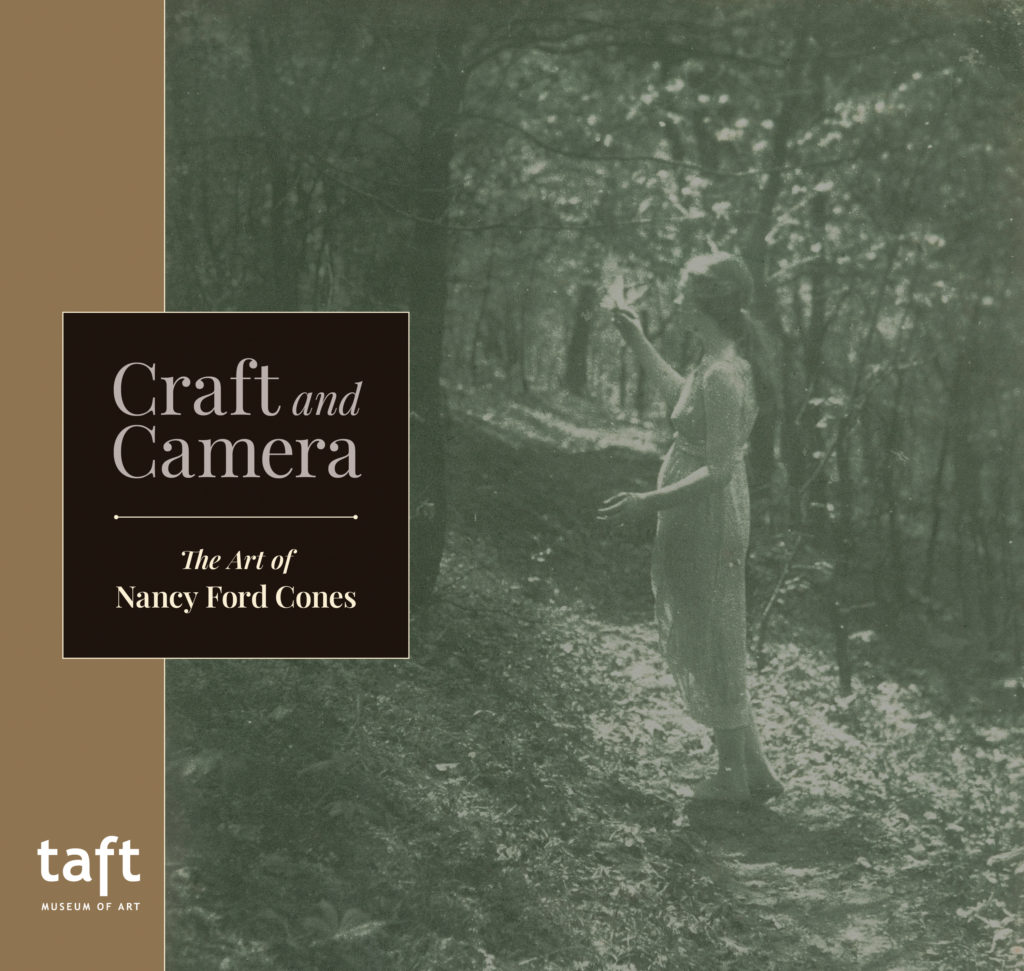
By Pepper Stetler
Published September, 2022 on the occasion of the 2022 FotoFocus Biennial exhibition, Craft And Camera: The Art Of Nancy Ford Cones.
Paperback, 132 pages. Taft Museum of Art, Publisher
While the Taft Museum of Art works on their online shop, this publication will be available in person at the Museum.
The Natural World
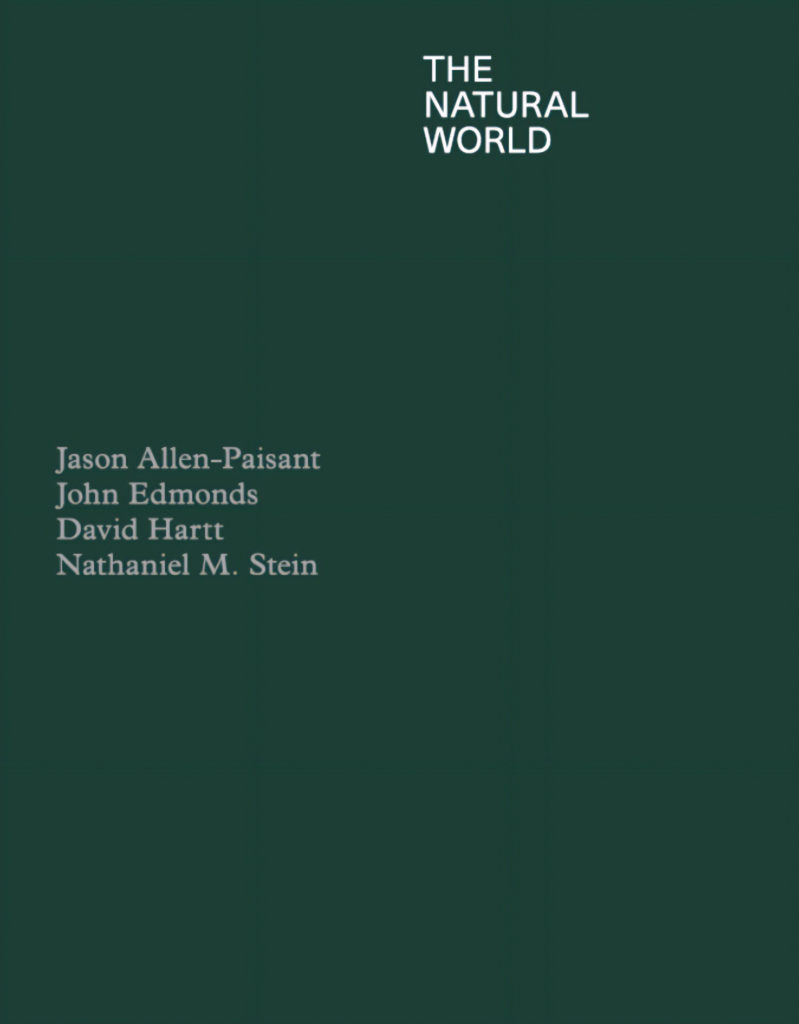
By Jason Allen-Paisant, John Edmonds, David Hartt, Nathaniel M. Stein
Published September, 2022 on the occasion of the 2022 FotoFocus Biennial exhibition, The Natural World.
Hardcover, 108 pages. Cincinnati Art Museum, Publisher
Natural World is a collaboration between visual artists John Edmonds and David Hartt, poet and scholar Jason Allen-Paisant, and curator Nathaniel M. Stein, each of whom brings particular tools and perspectives to the task of including silenced positions in a shared conversation about the nature of the world. The Natural World project encompasses both an exhibition of Hartt’s and Edmonds’s commissioned artwork, mounted by the Cincinnati Art Museum in 2022, and a companion book.
This book presents Hartt’s and Edmonds’s photographs in dialogue with artworks and documents the artists selected from the collections and records of the museum. Essays by Allen-Paisant and Stein explore interrelated encounters with collections, institutions, and notions of naturalness, reflecting on the practice of history against the social and institutional impetus to tell history straight. Stein situates the Natural World collaboration in a consideration of his professional practice, as a trans man. Allen-Paisant, a Black Jamaican living and working in England, writes of his own body as a medium through which to understand his relationship to nature.
Edmonds’s body of work, Father’s Jewels, is a profound meditation on themes of family, identity, community, and belonging. Conceived in dialogue with African sculptures and the European artistic tradition, Edmonds’s pictures explore wounding, conflict, reverence, and love within and between generations of men. Father’s Jewels offers a new visual expression of human experience, adding breadth and depth to what has been said—and what it is possible to say—about the world.
Hartt’s body of work, The Garden, examines ways of seeing and picturing the world rooted in European artistic, political, and intellectual traditions. Newly synthesizing concerns that he has explored throughout his career, Hartt focuses on plant life as it negotiates the environment outside human-assigned physical parameters and social meanings. The Garden equips us to see nonhegemonic life and its potential to evolve known stories about the nature of the world.
Ultimately, the Natural World project is about justice, about what voices and ways of knowing are admitted into human representation of the natural order.
Ian Strange: Disturbed Home

By Kevin Moore (Author, Editor), Britt Salvesen (Author), Ian Strange (Artist)
Published June 24, 2022 on the occasion of the 2022 FotoFocus Biennial exhibition, Ian Strange: Disturbed Home.
Hardcover, 115 pages. Damiani, Publisher
‘Disturbed Home’ is the first comprehensive survey of the artist’s architectural interventions, including photographic and filmic interpretations of those structural works. Highlighting projects of the past twelve years and spanning geographies from Strange’s native Australia, to New Zealand, Japan, Poland, and the United States, Strange’s provocative transformations of damaged or abandoned homes unlock themes of social upheaval and geographic displacement caused by a variety of factors—economic blight, environmental disaster, and social migrations.
Published on the occasion of exhibitions at the 2020 Perth Festival and the 2022 FotoFocus Biennial, ‘Disturbed Home’ features lucid commentary and original imagery on numerous distinct projects.
Also included are scholarly essays by FotoFocus artistic director and curator Kevin Moore and Britt Salvesen, curator and head of the Wallis Annenberg Photography Department and the Prints and Drawings Department at the Los Angeles County Museum of Art. Essays address Strange’s practice within traditions of street art, photography, film, public sculpture, and dance performance.
Additional Publications
In addition to those published on the occasion of the 2022 FotoFocus Biennial and related exhibitions, the below publication is a new release as well.
Elaine Mayes: The Haight-Ashbury Portraits 1967–1968
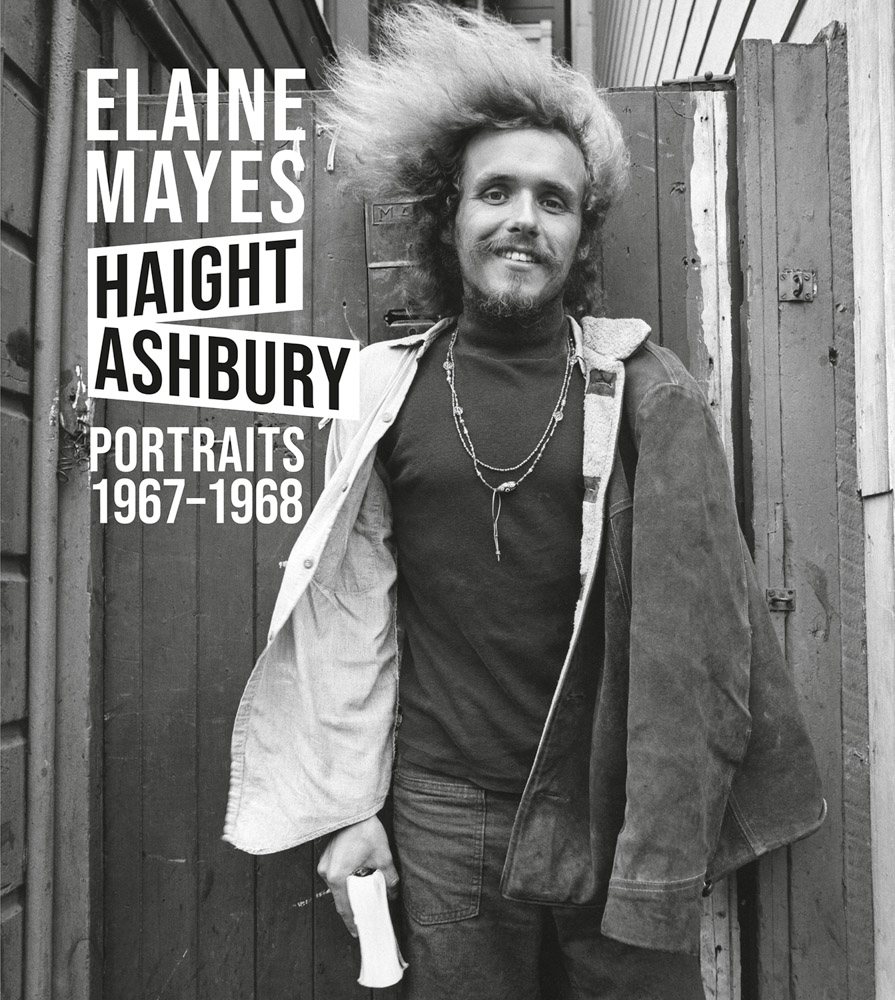
By Elaine Mayes (Author, Photographer), Kevin Moore (Author, Editor)
Published November 15, 2022.
Hardcover, 96 pages. Damiani, Publisher
Elaine Mayes was a young photographer living in San Francisco’s lively Haight-Ashbury District during the 1960s. She had photographed the Monterey Pop Festival in 1967 and, later that year, during the waning days of the Summer of Love, embarked on a set of portraits of youth culture in her neighborhood. By that time, the hippie movement had turned from euphoria to harder drugs, and the Haight had become less of a blissed-out haven for young people seeking a better way of life than a halfway house to runaway teens.
Mayes shifted from the photojournalistic approach she had applied to musicians and concert-goers in Monterey to making formal portraits of people she met on the street. Choosing casual and familiar settings, such as stoops, doorways, parks, and interiors, Mayes instructed her subjects to look into her square-format camera, to concentrate and be still: she made her exposures as they exhaled. Mayes’ familiarity with her subjects helped her to evade mediatized stereotypes of hippies as radically utopian and casually tragic, presenting instead an understated and unsentimental group portrait of the individual inventors of a fleeting cultural moment.
‘Haight-Ashbury Portraits 1967-1968’ is the first monograph on one of the decade’s most important bodies of work, presenting more than forty images from Mayes’ extensive series.
